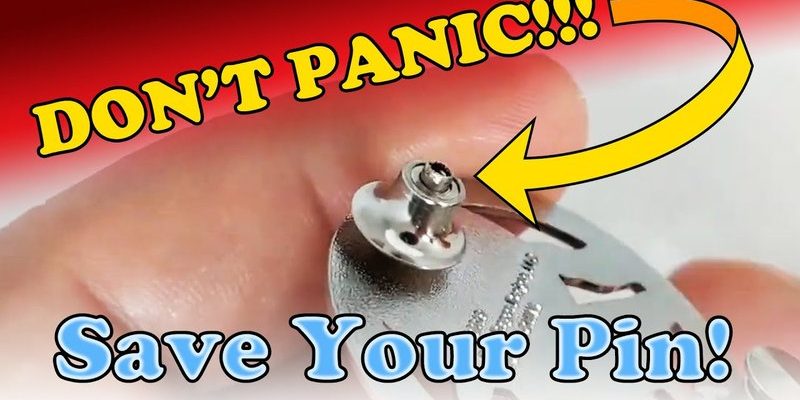
This guide will focus on the internal privacy pin mechanism typically found in brands like Sony or Samsung remotes. These remotes can often be a bit tricky. You might think fixing them is a job for a professional, but with a little guidance, you can handle it yourself. So, grab your toolkit, and let’s get started on making your privacy pin mechanism work like new again!
Understanding Your Privacy Pin Mechanism
Before we dive into the repair, it’s crucial to understand what a privacy pin mechanism actually does. This little device is what allows you to lock or unlock your remote control or electronic device, ensuring only you have access. Think of it as a password for your tech! When it’s functioning properly, it enables you to control your device securely, preventing unwanted access.
If the privacy pin is broken, it might not respond to your inputs. You might find that the remote doesn’t work at all or that it only responds intermittently. This can be frustrating, especially if you’re trying to enjoy a quiet night in. So why does this happen? Common issues can arise from physical damage, wear and tear, or even battery problems.
Here’s a quick rundown of how the mechanism works, so you have a clearer picture:
- The mechanism is typically a spring-loaded pin that locks into place or gets released when you input the correct code.
- When the pin is engaged properly, it should allow your remote to function seamlessly.
- If the pin doesn’t retract or engage, you might experience problems with syncing or pairing your remote with your device.
Understanding these basics will prepare you for the steps ahead.
Gather Your Tools
Before starting the repair, make sure you have all the necessary tools on hand. You wouldn’t want to be halfway through the process and realize you’re missing something crucial. Here’s what you’ll need:
- Small Phillips screwdriver
- Plastic prying tool (or a flathead screwdriver)
- Replacement pin mechanism (if needed)
- Wrench or pliers
- Cleaning cloth and isopropyl alcohol
Each tool plays an essential role in the repair process. For instance, the small Phillips screwdriver will help you open up the remote without damaging it, while the prying tool allows you to carefully separate the casing. Remember, being gentle is key; you want to avoid any additional damage.
Opening Up Your Remote Control
Once you have your tools ready, it’s time to get started. Opening your remote control can seem intimidating, but it’s actually quite straightforward when you follow the right steps.
First, find the small screws on the back of your remote control. Using your Phillips screwdriver, carefully unscrew them and place them somewhere safe—losing a tiny screw is all too easy! Once the screws are removed, gently use your prying tool to separate the front and back halves of the remote.
Here’s a tip: work your way around the edges and apply gentle pressure until the casing pops off. If you encounter resistance, check if you missed any screws. Patience is key here; rushing can lead to broken parts.
Inspecting the Mechanism
Now that you’ve opened the remote, it’s time to inspect the privacy pin mechanism. Look for any obvious signs of wear and tear. This can include:
- Broken springs
- Dirt or debris blocking the mechanism
- Corrosion around the pin itself
If you find dirt or debris, give the area a good clean using the cloth and isopropyl alcohol. Often, a good clean can do wonders!
If you spot damage to the pin itself, you may need to replace it. Don’t panic—replacement parts are usually easy to find online or at local electronics stores.
Repairing or Replacing the Privacy Pin
If your inspection revealed that the pin is malfunctioning, you’ll need to either repair or replace it. If it’s just a little stuck, you can usually free it by gently wiggling it back and forth. This can help loosen any dirt or corrosion that might be causing the problem.
If the pin is broken or too damaged to repair, replacing it is straightforward. You’ll need to find a compatible replacement for your specific remote model. Once you have the new pin, carefully install it by following the reverse of whatever steps you took to remove the old one.
Make sure to test the mechanism before reassembling the remote. Input your privacy code and see if the pin activates as it should. This step is crucial—if it doesn’t work, you’ll save yourself from the trouble of reassembling just to redo this part!
Reassembling Your Remote Control
Once the privacy pin mechanism is back in order, it’s time to put your remote control back together. This step is relatively simple but requires some care.
Start by aligning the front and back halves of the remote. Make sure not to pinch any wires or components in the process. Secure the two halves together and then replace the screws you removed earlier. Make sure they’re snug, but don’t over-tighten them; you don’t want to risk cracking the plastic.
Once everything is back in its place, give the remote a test run. Check to see if it pairs and syncs properly with your device. If it does, congratulations! You’ve successfully repaired the privacy pin mechanism.
Preventing Future Issues
Now that you’ve repaired your privacy pin mechanism, it’s a good idea to be proactive about preventing future issues. Here are a few tips to keep your remote in good shape:
- Regularly check the batteries; low power can lead to malfunctions.
- Avoid dropping or mishandling the remote, as physical impact can damage internal components.
- Keep your remote clean and free from dust and debris—this helps prevent sticky buttons and malfunctioning mechanisms.
Much like any gadget, a little care goes a long way in ensuring your remote continues to work smoothly.
Consider Upgrading Your Remote
If after all this, you find that your remote is still giving you issues, it might be time to consider an upgrade. Many universal remotes can replace multiple devices and often come with better features and reliability.
When looking for a new remote, consider one that has customizable privacy features or coding options. Brands like Logitech offer remotes that not only sync well with various devices but also provide great user experiences.
In conclusion, repairing a broken privacy pin mechanism can feel like a daunting task, but with the right approach, it’s definitely manageable. By understanding how it works, gathering the right tools, and taking your time with the repair steps, you can restore your remote control to working order. Feel empowered to tackle this DIY project, knowing that a little effort can lead to a big payoff in convenience and security!
